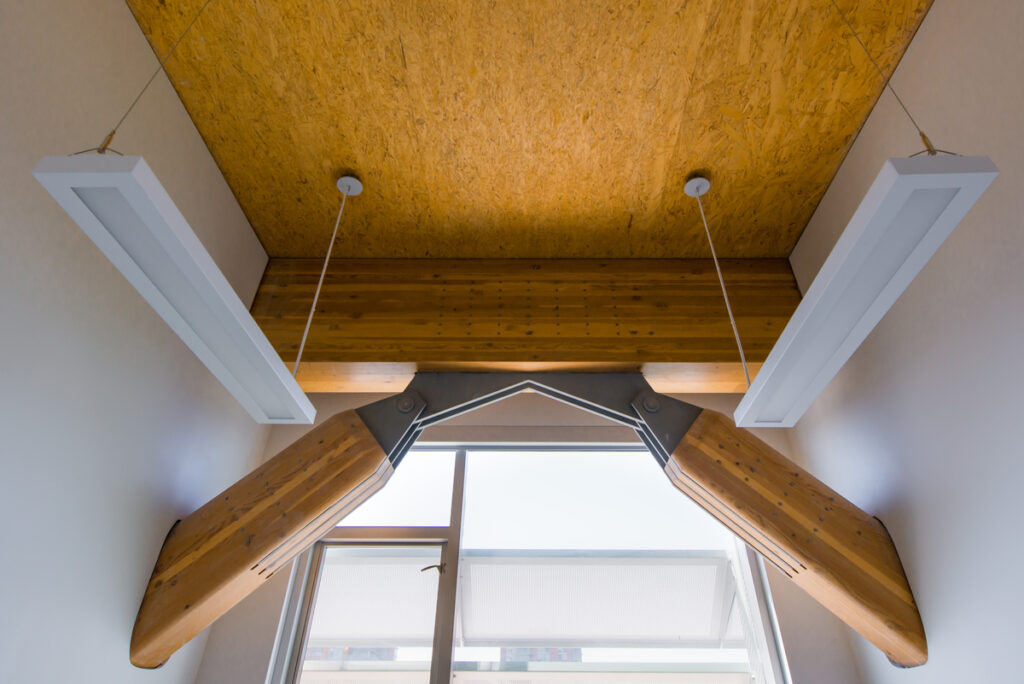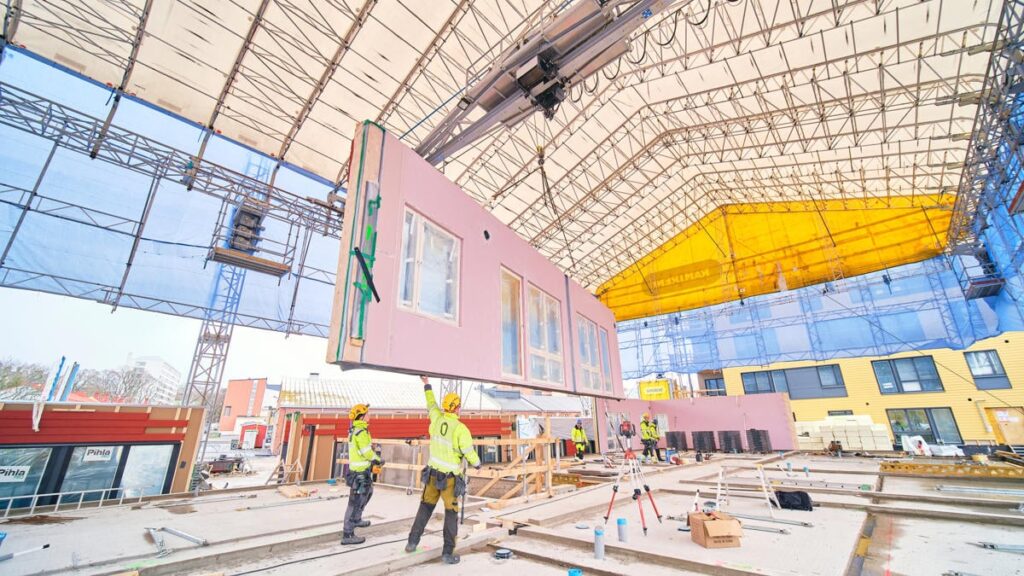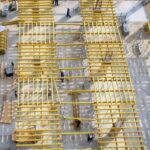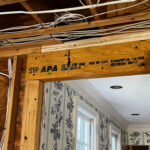LVL (Laminated Veneer Lumber) construction is a popular choice in the building industry due to its numerous benefits and versatile applications. This article explores the various aspects of LVL construction, including its definition, manufacturing process, advantages, applications, and the future trends associated with this innovative building material.
Understanding LVL Construction
Using LVL construction projects also has environmental benefits. LVL is made from fast-growing, renewable timber sources, making it a more sustainable choice compared to other building materials. Additionally, the manufacturing process of LVL produces minimal waste, further reducing its environmental footprint.
What is LVL Construction?
LVL, or Laminated Veneer Lumber, is a type of engineered wood product that is widely used in construction. It is created by layering thin veneers of wood together with adhesives and then bonding them under heat and pressure. The resulting LVL panels possess exceptional strength and durability, making them ideal for a variety of building applications.
LVL is known for its consistent quality and uniformity, as the manufacturing process allows for precise control over the properties of the final product. This predictability makes LVL a popular choice among architects and builders who require reliable structural components for their projects.
The Process of LVL Construction
The production of LVL involves several steps. First, logs are debarked and cut into thin sheets called veneers. These veneers are then dried to achieve the desired moisture content. Next, they are arranged with their grain orientations alternating in different directions, which enhances the structural integrity of the final product. The veneers are bonded together using high-quality adhesives, creating a composite panel that is stronger than solid wood.
After the bonding process, the LVL panels are subjected to heat and pressure in a press to ensure proper curing of the adhesives and to create a solid, homogenous material. This manufacturing technique results in LVL’s impressive load-bearing capacity and resistance to warping or twisting, making it a reliable choice for structural applications in residential and commercial construction.

The Advantages of LVL Construction
Durability and Strength of LVL
LVL construction offers superior durability and strength compared to traditional wood materials. The adhesive bonding process ensures that LVL panels exhibit consistent strength throughout, reducing the risk of warping or splitting. This makes LVL an excellent choice for load-bearing applications such as beams, joists, and headers.
Furthermore, LVL’s dimensional stability and resistance to warping make it an ideal material for use in challenging environments, such as high-humidity areas or regions prone to temperature fluctuations. This reliability ensures that structures built with LVL maintain their structural integrity over time, providing long-lasting support and stability.
Environmental Impact of LVL Construction
Moreover, the ability to source LVL from sustainably managed forests contributes to the preservation of natural habitats and biodiversity. By choosing LVL for construction projects, builders can support responsible forestry practices and help mitigate the impact of deforestation on the environment.
Cost-effectiveness of LVL Construction
Builders and contractors appreciate the cost-effectiveness of LVL construction. While the initial cost may be slightly higher than that of traditional lumber, the long-term savings are significant. LVL’s strength and durability result in fewer repairs and replacements, reducing maintenance costs over time.
Click here to read more about cost.
In addition, the versatility of LVL allows for efficient use of materials, minimizing waste during construction. This optimized resource utilization not only contributes to cost savings but also aligns with sustainable building practices, making LVL a practical and economical choice for various construction projects.

Applications of LVL in Building
Residential Building Applications
Laminated Veneer Lumber (LVL) is a popular choice in residential construction due to its exceptional versatility and strength. In addition to its common use for floor and roof beams, headers, and rim boards, LVL offers a sustainable alternative to traditional lumber. Its manufacturing process involves bonding together thin wood veneers with adhesives, resulting in a durable and reliable material. This eco-friendly aspect appeals to homeowners and builders looking to reduce their environmental impact.
Furthermore, the use of LVL in residential buildings allows for innovative architectural designs. Its superior strength-to-weight ratio enables builders to create open floor plans with expansive windows and high ceilings, enhancing the overall aesthetic appeal of modern homes. The dimensional stability of LVL also contributes to the longevity of structures, ensuring they withstand the test of time. Learn more about dimensional at https://www.bennington.edu/admissions/apply/dimensional-application
Commercial Building Applications
In the realm of commercial construction, LVL plays a crucial role in supporting large-scale projects and high-rise structures. The use of LVL for heavy-duty beams and columns provides the necessary structural support for buildings with multiple floors and complex designs. Its ability to resist warping and bending under heavy loads makes it a preferred choice for commercial applications where safety and reliability are paramount.
Moreover, the fire-resistant properties of LVL make it a desirable material for commercial buildings, meeting stringent safety regulations and enhancing overall occupant protection. Its consistent performance under various environmental conditions ensures that commercial structures remain structurally sound and secure for occupants and visitors alike.
Innovative Uses of LVL in Construction
While LVL is traditionally used for structural elements, its versatility has sparked innovative applications in the construction industry. Architects and designers are exploring new ways to incorporate LVL into building facades, interior finishes, and even furniture pieces. The aesthetic appeal of LVL, with its smooth and uniform appearance, adds a touch of elegance to modern construction projects.
Furthermore, the sustainability of LVL aligns with the growing trend towards green building practices, where materials with low environmental impact are favored. By utilizing LVL in creative and unconventional ways, builders can showcase the beauty and functionality of this engineered wood product, setting new standards for sustainable and visually appealing construction projects.
Future of LVL Construction
Technological Advancements in LVL Construction
The future of LVL construction holds promising technological advancements. Ongoing research focuses on developing new adhesives that enhance the strength and durability of LVL panels even further. These adhesives are being designed to withstand extreme weather conditions, such as high humidity and temperature fluctuations, ensuring that LVL structures remain stable and reliable over time.
Advancements in production processes and machinery are also expected to streamline manufacturing and reduce costs, making LVL even more accessible in the construction industry. Cutting-edge automation technologies are being integrated into LVL production lines, allowing for faster and more precise manufacturing. This not only increases productivity but also ensures consistent quality control, resulting in LVL panels that meet or exceed industry standards.
Sustainability and LVL Construction
As sustainability becomes increasingly important in construction, LVL is likely to gain further prominence. Its renewable and environmentally friendly attributes align well with the principles of green building. Architects and builders are keen on utilizing materials with low-carbon footprints, and LVL’s sustainable qualities make it an attractive option for both residential and commercial projects.
Furthermore, LVL is sourced from sustainably managed forests, where responsible harvesting practices are employed to ensure the long-term health and vitality of the ecosystem. This commitment to environmental stewardship extends beyond the production phase and into the life cycle of LVL structures. Due to its durability, LVL requires minimal maintenance and has a longer lifespan compared to traditional building materials, reducing the need for frequent replacements and minimizing waste. To know more aboout environmental click here.
Market Trends in LVL Construction
The market for LVL construction is expected to grow steadily in the coming years. Urbanization, population growth, and infrastructure development contribute to the increased demand for reliable and durable building materials. LVL’s exceptional strength and dimensional stability make it an ideal choice for high-rise buildings, bridges, and other structures that require long spans and heavy loads.
Additionally, the rising awareness of LVL’s advantages, including its structural performance and eco-friendliness, is driving its adoption in construction projects across the globe. Architects and engineers are increasingly recognizing the benefits of LVL, such as its resistance to warping, twisting, and shrinking, which ensures the structural integrity of buildings even in challenging environmental conditions.
Moreover, the versatility of LVL allows for innovative design possibilities, enabling architects to create unique and visually appealing structures. Its ability to be shaped and curved without compromising its strength makes it a preferred choice for architects seeking to push the boundaries of architectural design.
In conclusion, LVL construction offers a range of benefits and applications in the building industry. Its exceptional strength, durability, and cost-effectiveness make it a reliable choice for residential and commercial projects alike. Moreover, its sustainable nature aligns with the growing focus on environmentally friendly construction practices. As technological advancements continue to improve LVL’s performance and production efficiency, its market presence is expected to expand further, shaping the future of building construction.





